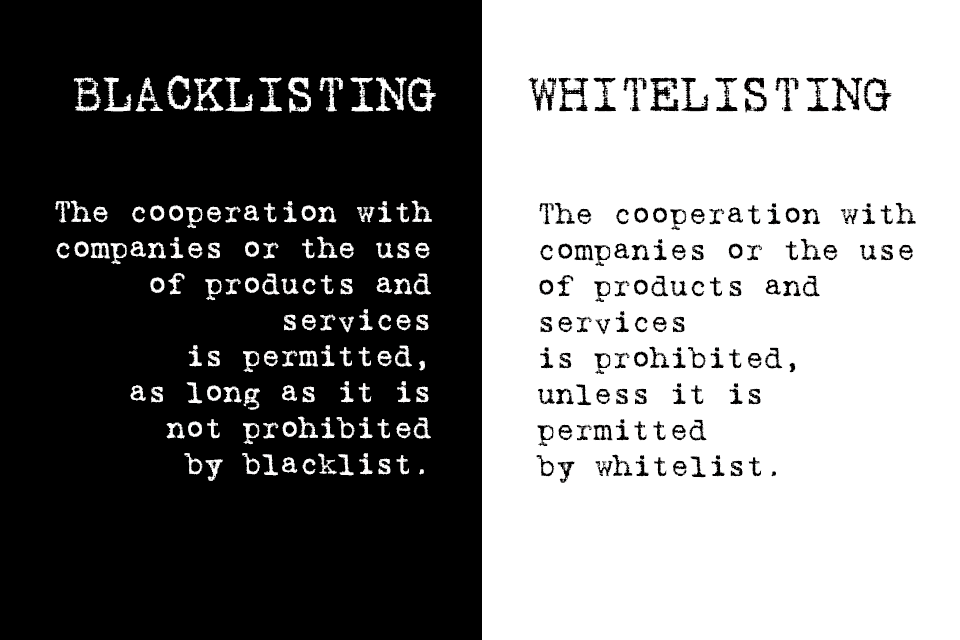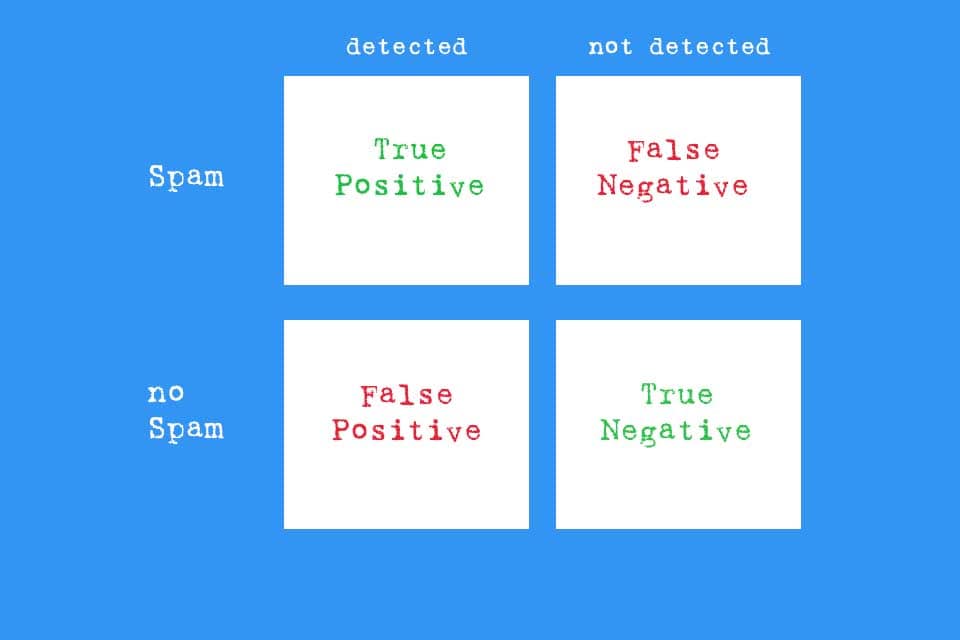What is Blacklisting?
Smartpedia: Blacklisting is the process of creating and maintaining a blacklist. A blacklist is used to manage similar elements that an organisation, individual or service distrusts.
Blacklisting – The documented distrust
You receive a service that you are extremely displeased with. You are using a product that does not adequately support promised features. A provider sends you countless useless e-mails. What do you do? You decide not to use the service provider from now on. You do not buy products from the provider who has disappointed you. And you mark the mails as spam or junk mail. In more general terms: You are blacklisting.
Blacklisting is the process of creating and maintaining a blacklist. The blacklist is the result of blacklisting. It is used to manage similar elements that an organisation, individual or service distrusts and no longer wants to use. Blacklisting or a blacklist is therefore the opposite of whitelisting or a whitelist.
Whitelisting vs. Blacklisting
A whitelist – alternatively also called positive list or exception list – documents positive and thus good entries in the figurative sense. It is also called an exception list, because cooperation with companies, working with individuals, using products or integrating services is only permitted if the companies, individuals, products or services are accordingly “released” for use in the exception list. In other words: everything that is not specifically included in the list of exceptions is generally prohibited.
Blacklisting reverses the process, i.e. everything is basically allowed in the first place, as long as it does not appear on the list. So while companies with their services and products are happy to try to land on corresponding whitelists of potential clients, they will usually try everything not to end up on a blacklist. Negative list or index are also often used as synonyms. Especially the alternatives negative list is very clear: an entry on the negative list is negative, an entry prohibits its use.
In company practice, the simultaneous use of whitelisting and blacklisting is also possible.
Examples for blacklisting
There are a number of examples of blacklisting or blacklists. In some cases, these are manually created lists that are “for internal use only” or that contain publicly available information. In other cases, they are lists that are created automatically according to rules and criteria that prevent the access or delivery of information. In this area there are for example blacklists for
- e-mails originating from indexed IP addresses, e-mail addresses or servers,
- the calling of websites or domains, programs or applications,
- phone numbers or social media accounts.
In short: In the computer age, negative lists are used wherever the display of certain content is undesirable, legal or dangerous, for example in anti-virus programs, in intrusion prevention or detection systems and all forms of spam filters.
But even far away from bits and bytes there are blacklisting or blacklists:
- For example, the European Union maintains an “EU list of non-cooperative countries and territories for tax purposes”¹ as part of the fight against tax fraud and tax evasion.
- The European Commission, in coordination with the air safety authorities of the Member States, lists airlines that are deemed unsafe to operate aircraft in European airspace.²
- Belgium has a blacklist in the financial sector, Estonia and Finland have lists for consumer protection, and France has a list of government and police forces on fraudulent companies.
And, of course, there are also reports of blacklisting in other places:
- Companies have blacklists of unwanted customers or business partners.
- Marketing departments define places and providers where campaigns should not appear.
- Journalists end up on blacklists because organisations are unhappy with reports on them.
- In Hollywood, there were black lists of directors, screenwriters and actors after the Second World War, and even today there is constant speculation as to whether such lists still exist or will exist again.
Impulse to discuss
Is it appropriate in the sense of a non-discriminatory language to replace the terms whitelist and blacklist with allowlist and blocklist?
[1] EU-Liste nicht kooperativer Länder und Gebiete für Steuerzwecke
[2] Flugsicherheit in der EU: Schwarze Liste aktualisiert
If you like the article or would like to discuss it, please feel free to share it in your network. And if you have any comments, please do not hesitate to send us a message.
Here you will find additional information from our Smartpedia section:



